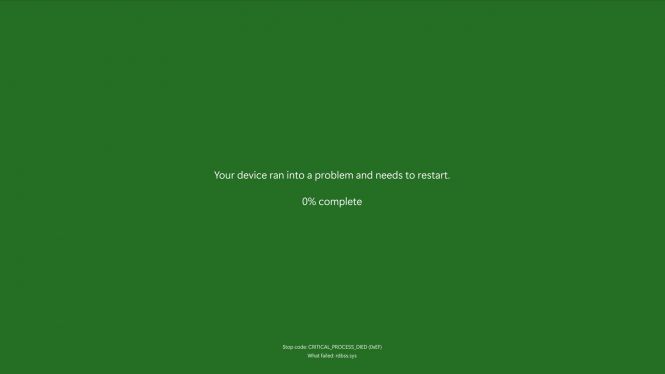 BSOD is now black; old practices to avoid it are still valid
BSOD is now black; old practices to avoid it are still valid
The dreaded Blue Screen of Death, which has been an integral part of any Windows OS experience for practically every user, is no longer with us. Microsoft painted it black, and introduced several other changes.
In this piece, we recall the key points of the BSOD’s history, consider the reasons behind the company’s decision to change it, and revisit the BSOD avoidance best practices.
The history of BSOD
This quick review is for the curious; if you just want to make sure you’re doing everything feasible to prevent your system from giving you the now-black screen of death, scroll down, please.
BSOD in Windows 3.0 and Windows NT 3.1
The Blue Screen of Death was introduced in Windows 3.0, where it was simply an error message only the initiated could decipher. In Windows NT 3.1, BSOD became a “Stop Error” that actually gave some technical details about the critical system failures that occurred.
BSOD in Windows 95 and 98
Starting from Windows 95, BSOD is “blue screen of lameness”: it started to pop up for driver crashes and other less fatal problems that did not even require a reboot. In Windows 98, the screen essentially remained the same.
BSOD in Windows 2000 and XP
In a major move, Microsoft abolished error-dependent blue screens of death and introduced a unified design, which lived up to Windows 8 (and Windows Server 2012) largely unchanged, barring the cosmetic touch-ups made in Windows XP.
BSOD in Windows 8 and Windows 10
This iteration of the operating system saw BSOD change its color slightly and put on the sad emoticon. The message was simplified to indicate that some problems occurred and the PC needs to restart. Starting from Windows 10, BSOD was sporting a QR code that led to a KB page describing the respective problem.
Windows 11: experimenting with the black
Interestingly, Microsoft tried making the screen of death black in 2021, in the initial release of Windows 11, but was pressured by users to revert back to blue. It looks like the idea of changing the color was simply put on the backburner, and recently re-realized.
The new BSOD is much more simple. For now, Microsoft has revealed its green version, which is shown to those participating in the Insider program (the title image of this post); having dropped the sad emoticon and the QR code, it is supposed to be less intimidating. The info about the error per se is there, though, but it was moved to the bottom of the screen.
How to prevent BSOD in Windows?
The items below may feel trivial, but if you take them as a checklist and go through each one by one, the result of this exercise will shield you from BSODs, blue or black, at least until the next update of the operating system.
- Update your software. And keep it updated. Each next version typically patches code discrepancies from previous iterations, which is a good thing from the point of view of the system’s general stability. Need help with keeping your programs fresh, autopilot style? Download Software Informer, a free and lightweight updater.
- Check and update your drivers. In many cases, drivers are updated routinely, together with the components of the operating system, but not always so. If some essential part of your setup acts up, find it in the Device Manager and see if there are new drivers for it. This is something best done on a more or less regular basis.
- Take care of your hardware. If you’re not a techy DIY type, simply take your computer to a shop once a year or so, ask to clean its internals and renew the layer of thermal compound on the CPU.
- Upgrade as needed. If the jobs you use the computer for have grown more complicated, and you hear the fans working in the fierce mode more often than before, consider adding RAM to your setup, or upgrading it more drastically, with a new motherboard and core, and/or a graphics card.



